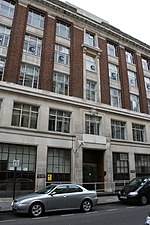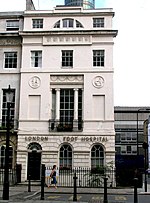DNEG
DNEG (formerly known as Double Negative and stylized as D N E G) is a British visual effects, computer animation, and stereo conversion studio that was founded in 1998 in London, and rebranded as DNEG in 2014 after a merger with Indian VFX company Prime Focus, it was named after the letters "D" and "Neg" from their former name.The company has received seven Academy Awards for its work on the films Inception, Interstellar, Ex Machina, Blade Runner 2049, First Man, Tenet and Dune. In addition, DNEG has received BAFTA awards for Inception, Harry Potter and the Deathly Hallows – Part 2 , Interstellar, Blade Runner 2049, Tenet, Dune and Black Mirror's "Metalhead", and Visual Effects Society awards for its work on films such as The Dark Knight Rises, Sherlock Holmes, Inception, Interstellar, Dunkirk, Blade Runner 2049, Altered Carbon, First Man, Chernobyl, Last Night In Soho, Foundation and Dune. It has also received Primetime Emmy Awards for its work on Dreamkeeper, Chernobyl and season 3 of Star Trek: Discovery.DNEG is headquartered in Fitzrovia, London with additional locations in Vancouver, Mumbai, Los Angeles, Chennai, Montréal, Mohali, Bangalore, Toronto and Sydney (opening in 2023).
Excerpt from the Wikipedia article DNEG (License: CC BY-SA 3.0, Authors).DNEG
Clipstone Street, City of Westminster Fitzrovia
Geographical coordinates (GPS) Address Nearby Places Show on map
Geographical coordinates (GPS)
| Latitude | Longitude |
|---|---|
| N 51.521114 ° | E -0.141841 ° |
Address
The London Smile Clinic
Clipstone Street
W1W 6BB City of Westminster, Fitzrovia
England, United Kingdom
Open on Google Maps








